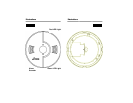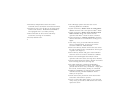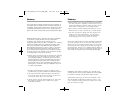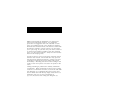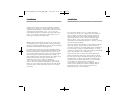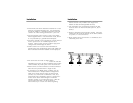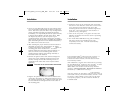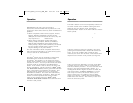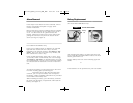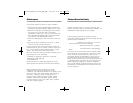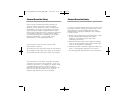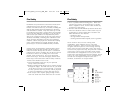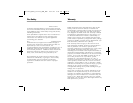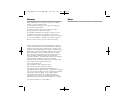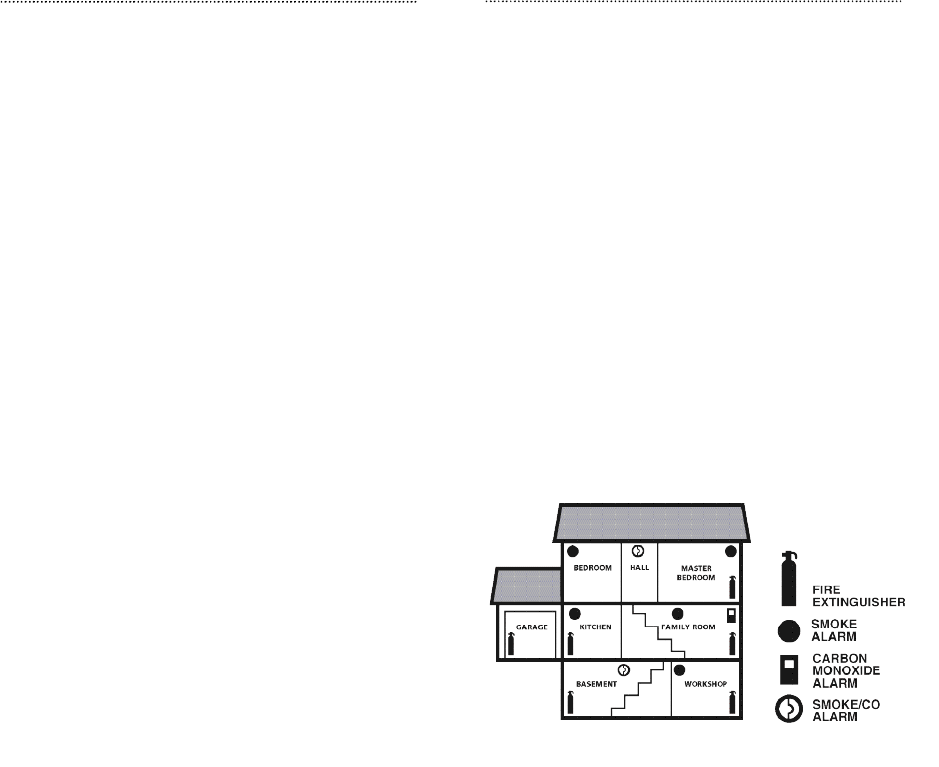
2928
• Go to a predetermined meeting place. When two
people have arrived, one should leave to call 911
from a neighbor’s home, and the other should stay
to perform a head count.
• Do not re-enter until fire officials say that it is safe to do so.
• There are situations where a smoke alarm may not
be effective to protect against fire as stated in the
NFPA Standard 72. For instance:
- smoking in bed;
- leaving children unsupervised;
- cleaning with flammable liquids, such as gasoline.
Fire Prevention
Never smoke in bed, or leave cooking food
unattended. Teach children never to play with
matches or lighters! Train everyone in the home to
recognize the alarm pattern, voice message warning
and to leave the home using their escape plan when
it’s heard. Be prepared to stop, drop and roll if clothes
catch on fire, and to crawl low under smoke. Install
and maintain fire extinguishers on every level of the
home and in the kitchen, basement and garage. Know
how to use a fire extinguisher prior to an emergency.
Second level and higher occupied rooms with
windows, should have an escape ladder.
Escape Plan
Familiarize everyone with the sound of the smoke alarm
and train them to leave the home when they hear it.
Practice a fire drill at least every six months, including fire
drills at night. Ensure that small children hear the alarm
and wake when it sounds. They must wake up in order
to execute the escape plan. Practice allows all occupants
to test your plan before an emergency. You may not be
able to reach your children. It is important they know
what to do. Know two ways out of every room (door &
window) and identify a meeting place outside the home
w h e r e everyone will gather once they have exited the
residence. When two people have reached the meeting
place, one should leave to call 911 while the second
person stays to account for additional family members.
Smoke Alarm Procedure
Smoke alarms are designed to minimize false alarms.
Cigarette smoke will not normally set off the alarm,
unless it’s blown directly into the alarm. Combustion
particles from spills or broiling may set off the alarm if
located too close to the cooking area. If the alarm
sounds, check for fires first. If a fire is discovered
follow these steps. Become thoroughly familiar with
these steps, and review them with all family members.
• Alert small children in the home.
• Leave immediately using one of your planned
escape routes (see above).
• Before opening inside doors look for smoke seeping
through the edges. Feel with the back of your hand
- if the door is hot use your second exit. If you feel
it’s safe, open the door very slowly and be prepared
to close it immediately if smoke and heat rush in.
• If the escape route requires going through smoke,
crawl low under the smoke where the air is clearer.
F i r e Safety
F i r e Safety
810-1692_RevD_119-133_MAN_ENG 10/7/03 4:41 PM Page 28



